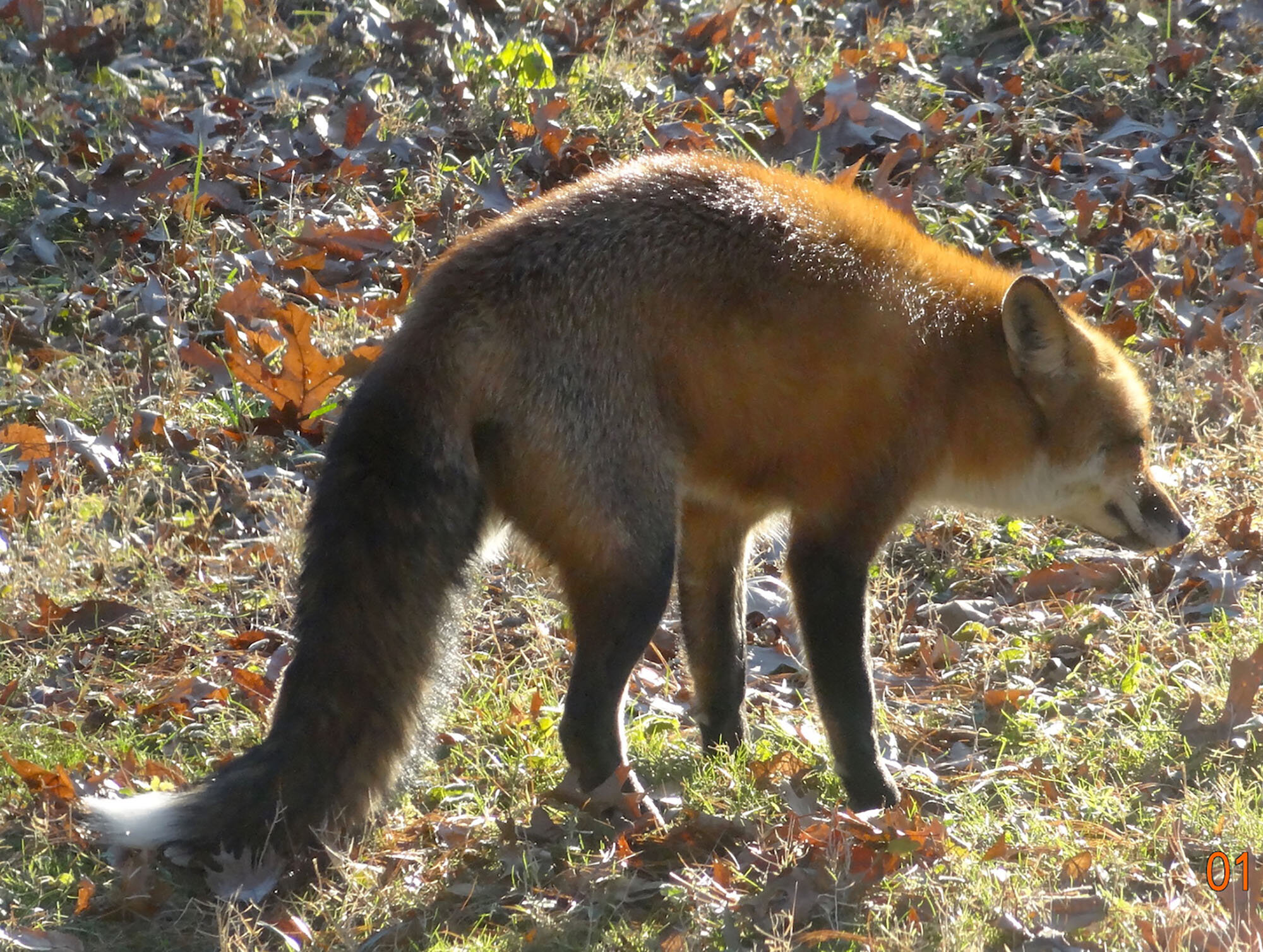Wildlife Observations: January 24, 2020
December saw a dearth of submissions, but in the past fortnight, a plethora of reports poured in. But enough SAT words; on to the fauna (and one fungus) reports:
On January 12, Julie Ellis saw a bald eagle soaring above Swarthmore’s town center, and the following day Geoff Semenuk saw an immature bald eagle rising from Smedley Park. Here’s hoping that this is evidence of some eagles taking up permanent residence in the area. This correspondent heard rumors last year that a pair was nesting in Rose Valley. But the high journalistic standards of the Swarthmorean don’t permit us to toss about mere rumors. So strike that last sentence from the record.
Anthony Addison saw this full-coated red fox in its winter colors in his yard on Cornell Avenue in Swarthmore.
Photo: Anthony Addison
Photo: Susan Kelly
Susan Kelly of Swarthmore saw a raccoon in Little Crum Creek and said: “This fellow was not happy with me taking his picture and kept his eye on me when I tried to get closer. Maybe he wasn’t happy with our work removing much of the invasive growth along the stream bank.” Keep on pulling those invasives! And kids, stay away from raccoons generally, but especially during daylight hours. To paraphrase the old song “only mad (meaning rabid) dogs [raccoons] and Englishmen go out in the midday sun.”
Jonathan Hodgson and Jane Billings, both of Swarthmore, separately observed Carolina wrens in their yards. Ms. Billings’ attention was drawn to the bird by the volume of its song, which is inversely proportional to its size. It’s the loudest song from the smallest bird you’ll ever hear (in my experience). The Carolina wren is distinguished from the locally common house wren by its bold eye stripe.
George McCarthy reports having seen the following bird species in his yard on Riverview Road: mourning dove, red-bellied woodpecker, downy woodpecker, American crow, blue jay, Carolina chickadee, tufted titmouse, white-breasted nuthatch, gray catbird, American robin, slate-colored junco, northern cardinal. Most of these species are year-round residents of the area, except for the juncos, which will return to northern climes after winter.
Photo by Julie Ellis
Julie Ellis reported that a trip to Crum Creek in Crum Woods at Swarthmore College resulted in the following: “I turned over a rock in the creek and found an amphipod – a ‘scud’ or ‘side swimmer,’ as they are commonly called. Amphipods, like crayfish, shrimp, and sowbugs, are crustaceans. They are found in almost all aquatic environments, and most are detritivores and scavengers.” I was unaware of any crustaceans in our local waterways beyond crayfish, so I appreciate Julie’s schooling on the subject. She also said that she “found some ‘turkey tail’ growing on a rotted log within a patch of lichen. Turkey tails are a type of bracket fungi that grow on dead, deciduous wood, in the wounds of living hardwood trees, and on conifers throughout Canada and the U.S.”
Photo by Lynn Kelley
Mike Vandellos of Swarthmore and Lynn Kelley of Rose Valley each submitted a photo of a red-tailed hawk taken in their respective yards. The hawk in Mike’s photo is feasting on a gray squirrel.
Please continue to send your observations and photographs of wildlife species in the Wallingford-Swarthmore School District area by clicking/tapping the button below.







